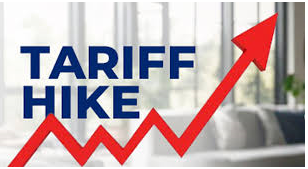INP-WealthPk
Ayesha Saba
The US tariff hikes serve as a wake-up call for Pakistan, requiring it to cut reliance on the traditional markets and explore alternative trade avenues. In a shifting global trade landscape, regional diplomacy and market diversification are essential to securing Pakistan’s trade future.

Talking with WealthPK, former project director of Center of Excellence – CPEC and head of the Fiscal and Tax Policy Section at the Pakistan Institute of Development Economics (PIDE) Mehmood Khalid said the US tariff hikes will not only affect Pakistan’s bilateral trade but also undermine the broader regional trade framework. It is part of a larger trend of trade protectionism, which has shaken the global economic dynamics, especially in developing economies like Pakistan.
“The primary concern for Pakistan is the imposition of higher tariffs on textiles, which constitute the largest share of the country’s exports. This sector, already struggling with limited growth opportunities due to the domestic issues, faces a significant setback with reduced competitiveness in the US market.” In light of these challenges, he urged the government to intensify regional trade ties, particularly with the Central Asian countries.
He emphasized that Pakistan must leverage its strategic location to tap into the growing markets of Uzbekistan, Kazakhstan, and Turkmenistan. "Central Asia represents an untapped opportunity for Pakistan. These countries have a rising demand for Pakistani textiles, pharmaceuticals, and agricultural products, and they also offer access to Russia and Europe through the land routes.
The CPEC could serve as a critical gateway, but more proactive diplomacy is needed to finalize trade agreements,” Mehmood Khalid said. According to Dr. Asad Rehman, a senior economist at the Institute of Strategic Studies Islamabad (ISSI), the US tariff hikes could shrink Pakistan’s export revenues by 10-15% over the next fiscal year. “Pakistan’s textile sector, which contributes over 60% of total exports, is particularly at risk. Our manufacturers will face intense pressure to either absorb the additional costs or lose the market share.
This situation is further complicated by Pakistan’s ongoing economic challenges, including high inflation, energy shortages, and a weakening rupee, all of which diminish the country’s ability to compete in price-sensitive markets.” He pointed out that the US and EU remain Pakistan’s most vital export destinations, forming the backbone of the country's external trade. While Pakistan needs to explore and develop new markets to enhance its export performance, this shift will take considerable time, he said.
This insight highlights a core policy challenge: although diversifying export markets is necessary for long-term resilience, the country’s heavy reliance on established Western markets cannot be swiftly undone. As a result, the trade policymakers face a complex balancing act. They must gradually cultivate new trade alliances while safeguarding the critical existing markets that continue to generate the lion’s share of export revenue.
Credit: INP-WealthPk





